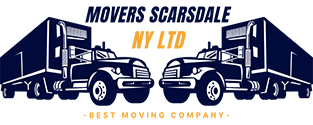Moving across the country is an exciting yet overwhelming experience. It requires a great deal of planning, organization, and commitment to ensure that everything goes according to plan. Long-distance, local moves can be especially challenging as they involve the additional complexities associated with transporting belongings over long distances. This article provides expert advice for those embarking on this journey in order to make sure their move is successful from start to finish.
The first step in any long-distance move is proper preparation and planning. Careful research into different moving companies, routes, timeframes, and budgets is essential for ensuring a smooth transition into one's new home or office space. It is also important to consider all safe storage options available such as shipping containers or rental trucks, which may be more cost-effective than traditional methods of transport. Additionally, packing supplies should be obtained well ahead of the scheduled departure date in order to ensure that all items arrive intact at the final destination.
Finally, it is critical that individuals take measures to protect their belongings during transit by selecting appropriate insurance plans and keeping track of personal documents throughout the entire process. The tips outlined above provide guidance regarding how best to prepare for a long-distance, local move so that people can rest assured knowing their possessions will arrive safely at their desired location, allowing them to focus on settling into their new surroundings quickly and easily.
Table of Contents
What Is Long-Distance Moving?
Long-distance moving is when you relocate to a location that is 50 miles or more away from your current residence. This type of move requires careful planning and preparation, including researching long-distance movers and understanding the costs involved in distance moving.
It's important to be aware of what's included with long-distance moves, so you have an accurate estimate of how much it will cost. Most companies offer basic services such as packing assistance, loading, unloading, storage options, and insurance coverage. However, there are often additional fees associated with certain types of items, like large furniture pieces or fragile items that need special care during transport.
When considering a long-distance move, it's essential to research reputable moving companies that provide quality services at competitive prices. It's equally important to ask questions about their experience helping customers complete successful moves over distances greater than fifty miles. Taking this step can help ensure that your belongings arrive safely and within the expected timeframe for your new home. With the right amount of planning and forethought, finding a reliable mover can make all the difference for a successful relocation journey ahead.
Finding A Reputable Moving Company
When planning a long-distance move, it is essential to find a reputable moving company. The best way to evaluate the quality of service provided by different movers is to read reviews from previous customers. Reviews can provide insight into customer satisfaction and an understanding of any issues that may have arisen during the course of their particular move. Furthermore, checking online ratings for each company can provide an indication of how reliable they are in terms of pricing, delivery times, and customer experience.
It's also important to take time when considering which mover is most appropriate for your needs. Ensure you have all the necessary information about their services – such as insurance policies or any additional fees that might be applicable – before making a final decision. Additionally, ask friends and family members who have had positive experiences with local movers if they would recommend them again – this could help narrow down your search substantially.
Finally, make sure your chosen mover has been accredited by either the American Moving & Storage Association (AMSA) or Federal Motor Carrier Safety Administration (FMCSA). This will guarantee that they adhere to industry standards and regulations so you can rest assured knowing your belongings are in safe hands throughout the journey ahead. With due diligence taken on finding a suitable contractor, preparing for the move should be less daunting than initially thought.
Preparing For The Move
Preparing for a long-distance move can be intimidating, but with the right planning and foresight, it is possible to make the process much smoother. The first step in getting ready for such a move is budgeting. Accurately assessing your moving expenses ahead of time will help you plan effectively and avoid financial strain down the line. This includes factoring in costs associated with storage solutions as well as packing materials if needed. Additionally, creating a checklist of tasks that need to be completed before the big day helps ensure nothing gets overlooked or forgotten along the way.
In addition to setting up an appropriate budget and making a list of necessary tasks, preparing for a long-distance move also involves conducting research on potential movers, gathering quotes from different companies, and finding out about their services and credentials. It is important to get multiple estimates so you can compare pricing and determine which mover best suits your needs at the most affordable rate. Finally, taking into consideration factors like insurance coverage, reviews from past customers, licensing information, and regulations related to interstate moves should all be taken into account when selecting a mover.
To better prepare yourself for a successful long-distance move, it's essential to take care of these preliminary steps beforehand; this will help reduce stress during what may feel like an overwhelming process. Packing tips and strategies are invaluable resources that can significantly improve the overall experience while ensuring belongings arrive safely at their destination.
Packing Tips And Strategies
When it comes to long-distance, local moves, packing is one of the most important steps in ensuring a successful and stress-free relocation. To ensure that all your belongings arrive safely at their destination, there are some essential tips and strategies you should keep in mind when preparing for the move.
First, it's important to select the right materials and supplies for your packing job. Heavy-duty boxes with handles make transporting heavier items easier and more secure during transit. You will also need high-quality wrapping materials such as bubble wrap or newsprint paper for delicate items like dishes or electronics, plus strong tape for sealing boxes shut once they have been filled up. Lastly, don't forget about labels – these can be purchased from any moving supply store or online retailer and are an invaluable tool for keeping track of all your packed belongings while on the road.
Another useful tip is to create a comprehensive packing checklist before starting out with the process. This list should include everything you intend to transport with you on the move, including furniture pieces, appliances, clothing, and other personal items. Once this list has been created, it's time to start organizing how each item will be packed into its corresponding box or container – grouping similar objects together where possible so that they can easily be located upon arrival at your new home. Finally, take special care when loading fragile goods onto trucks; remember to cushion them properly using plenty of padding material such as blankets or pillows for extra protection against bumps along the way.
With careful preparation and attention to detail throughout the packing process, you'll be well on your way toward transporting your belongings safely across town without breaking a sweat!
Transporting Your Belongings Safely
When it comes to safely transporting your belongings for a long-distance, local move, preparation is key. Preparation ensures that your items will make the journey in one piece and arrive at their new destination unscathed. To ensure transport safety, begin by packing all of your belongings properly. This means using sturdy boxes, bubble wrap, and other protective materials to keep fragile items from being damaged during transit. Make sure to label each box with its contents as well as which room it belongs to for ease of unpacking when you reach your destination.
Next, secure any furniture or appliances with straps or shrink wrap prior to loading them onto the truck. This helps avoid any shifting while in transit and can prevent damage due to collisions on the roadways. After everything has been loaded onto the truck, inspect every item once more before departure and verify that nothing was left behind or forgotten in the chaos of the moving day.
Finally, be sure to plan ahead for unloading upon arrival, so you don't have any surprises after an exhausting drive across town. Have friends ready who are willing to help if necessary and allocate enough time beforehand so there's no rush when things start arriving at their final destination. With these steps taken into account, your long-distance move should go smoothly, leaving you free to navigate the logistics of a moving day without worry!
Navigating The Logistics Of Moving Day
The logistics of a long-distance move can be daunting. Preparation is essential for success on moving days. Taking the time to plan ahead and gather necessary packing supplies will ensure that everything goes as smoothly as possible.
First, it is important to consider the transportation planning involved in moving day. For example, if you are renting a truck or trailer for your move, make sure to book one early so that it arrives at least two weeks before moving day. This will give you time to load up and get familiar with any unfamiliar equipment before hitting the road. Additionally, if possible, have someone else drive the vehicle while you focus on directing traffic and loading/unloading possessions into containers such as boxes or bags.
Next, take stock of all the packing supplies needed for the big day. Having an adequate number of sturdy cardboard boxes and plenty of bubble wrap will help keep fragile items safe during transport. A few rolls of packing tape should also be part of your inventory; use this type specifically designed for shipping purposes since it is stronger than regular tape and won't leave behind a sticky residue when removed from surfaces like walls or furniture pieces. It is always better to err on the side of caution by buying too many materials rather than enough – nothing could put a damper on movin' day faster than discovering there aren't enough supplies!
Finally, set aside some extra time prior to leaving for unforeseen circumstances, such as heavy traffic or weather delays that may arise along the way. These small details can add up fast, leading to unexpected stress down the line – but having a contingency plan in place beforehand can make these hiccups much more manageable when they occur. With proper knowledge and preparation, dealing with potential issues becomes less intimidating and more exciting!
Dealing With Delays And Unforeseen Circumstances
Moving can be like navigating a river. It is possible to plan the journey carefully and follow a straight path, but there are always obstacles that may arise along the way. Delays and unforeseen circumstances can occur when planning for long-distance moves or relocations. Fortunately, with the right strategies in place, it is possible to manage these issues effectively and ensure a successful move.
When moving long distances, delays can often happen due to weather conditions, traffic congestion, road closures, mechanical problems with vehicles or equipment used by moving companies, etc. In order to minimize such delays during your relocation process, it is important to have an experienced company on board that understands all of the nuances associated with long-distance moves. They should also have access to emergency services if needed so that any potential delays can be dealt with quickly and efficiently. Additionally, having an inventory of items being moved will help in identifying any lost or damaged items as soon as they arrive at their destination.
It is also important to plan ahead for any unforeseen circumstances that could potentially arise during your moves – such as natural disasters, power outages, or even medical emergencies while en route. Having contingency plans in place will go a long way toward ensuring a smooth transition and avoiding costly repairs down the line. This includes making sure you have contact information for everyone involved in the move (including movers), having multiple copies of all documents related to the move stored securely online and offsite, tracking shipments regularly throughout transit, carrying basic first aid supplies/medicines with you and keeping extra cash handy just in case of emergency expenses.
These steps will not only reduce stress during what might otherwise be an unpredictable situation but also make it easier for you to settle into your new home or office without too much hassle once everything has been delivered successfully.
Settling Into Your New Home Or Office
Unpacking and settling into a new home or office after a long-distance move can be overwhelming. It is important to keep in mind that the process of familiarizing yourself with your new surroundings will take time. Spending some extra effort on unpacking and organizing before beginning the settling-in process can make all the difference.
Start by taking inventory of what you have moved, making sure everything arrived intact, and noting any items missing. This will help ensure an efficient transition as you begin to settle in. If possible, start unloading furniture first so that it is easier for other items to find their place when they arrive at your destination. As you are setting up each room, don't forget about personal touches like photos and artwork from home – these things go a long way in making your space feel like yours.
As you become more comfortable with your new environment, remember to explore beyond your immediate area. Get out there and explore the neighborhood – walk around town, meet people who live or work nearby, and visit local attractions. Learning about the community brings familiarity and helps create a sense of belonging when relocating for business or pleasure. Taking part in activities outside of your new residence allows you to connect with others while also exploring different aspects of everyday life that could enhance the quality of living away from home.
When done properly, unpacking and settling into a new home or office after a long-distance move should not be stressful nor overwhelming; it is often seen as an opportunity for growth and exploration that leads to a better understanding of our lives within our communities. With this knowledge, we are better able to minimize stress during our transitions between homes or offices, no matter how far apart they may be geographically speaking.
Minimizing Stress During A Long-Distance Move
Moving is a daunting process, especially when it involves long-distance relocation. Moving to a new home or office can be an exciting yet overwhelming experience. To ensure the transition goes as smoothly and stress-free as possible, there are certain tips that should be followed.
A key factor in minimizing stress during a long-distance move is proper planning. It's important to make sure all the necessary paperwork has been completed ahead of time, such as rental applications, moving permits, and insurance forms. Knowing your timeline for packing and loading up items into your truck will also help alleviate any last-minute rush on a moving day. Additionally, preparing a list of tasks to complete throughout the entire process ensures nothing gets left behind when you're ready to depart for your new destination.
The mental health aspect of moving should not be overlooked either; transitioning from one place to another can take its toll on our emotional well-being if we don't prepare ourselves properly beforehand. Having friends and family members around who understand what we're going through can often provide comfort during this difficult period of adjustment. Allowing yourself plenty of time to relax and unwind with activities like yoga or meditation can also keep anxiety levels at bay while providing much-needed physical rest before embarking on the journey itself.
When taking part in a long-distance move, it's important to recognize that everyone copes differently; finding ways to stay organized while remaining flexible will go far in helping manage stress levels throughout the duration of the relocation period. Whether it's creating lists of things that need to get done or relying on others for support, having strategies in place prior to leaving our old residence can significantly reduce the worry associated with making such a big change in life. With these helpful tips, anyone facing a lengthy relocation venture can minimize their anxieties about heading far away from familiar places towards unknown territory by feeling better prepared for whatever comes next along the way.
Important Considerations For Long-Distance Moves
When embarking on a long-distance move, there are many important considerations to consider. These include:
1. Long-Distance Moving Costs: It is important to be aware of the potential costs associated with moving long distances. This includes fees for packing materials and services, transportation costs, fuel expenses, and any applicable taxes or customs charges.
2. Interstate Moving Regulations: Different states have different regulations regarding interstate moves that must be followed in order to ensure a smooth transition process. Familiarizing oneself with these rules and taking steps to adhere to them can help minimize costly delays and headaches during relocation.
3. Storage Options: For those who cannot immediately move into their new location, it may be necessary to find suitable storage options along the way. Researching local facilities and determining to price ahead of time can save money and stress during the moving process.
4. Time Management Strategies: When planning for a long-distance move, it's essential to develop strategies for managing time efficiently throughout the entire process – from planning out an itinerary to unloading boxes once you reach your destination. Planning ahead also helps eliminate surprises so that you can stay organized and on schedule as much as possible during the relocation process.
In addition, having adequate moving insurance coverage is key when relocating across state lines or internationally; understanding what type of protection is available will help protect against unexpected losses due to damage or theft during transit or upon arrival at your new home. Taking all these factors into account before beginning your long-distance move ensures a smoother, less stressful experience overall while helping reduce potential risks throughout every step of the journey.
Frequently Asked Questions
What Documents Do I Need To Provide When Moving Long-Distance?
According to recent statistics, more people are moving long-distance than ever before. As such, knowing the necessary documents for a successful transition is paramount. There are many requirements for a long-distance move, and understanding them all can be daunting. In this article, we will discuss the paperwork required when arranging a long-distance move:
* Valid ID
* Proof of Residency
* Moving Insurance Documents
* Updating Your Address with Government Agencies
* Change of Address Forms for the Post Office
When relocating to another state or country, it is important to have valid identification on hand. This may include a driver's license, passport, birth certificate, or other forms of picture ID that verifies your identity and current address. Additionally, proof of residency should be obtained in order to provide evidence that you live where you say you do. It could also be beneficial to obtain insurance documents as they will help protect your belongings during transit and ensure their safe arrival at your new home.
Alongside these measures, updating government agencies about your change of address is essential; otherwise, mail and bills cannot reach you at the right place and time. Finally, informing the post office by filling out an official change of address form ensures any mail sent with incorrect addresses still reaches its intended destination without delay. All these steps must be taken prior to making a successful long-distance move to avoid potential issues further down the line. With proper preparation, it is possible to make an effortless transition between states or countries!
How Much Time Should I Allow For A Long-Distance Move?
When it comes to long-distance moves, one of the most important considerations is how much time should be allowed. This can depend on a variety of factors, such as distance and the number of items being moved. For those planning a long-distance move, it's essential to ensure that enough time is allocated for the process.
The timeline for a long-distance move varies depending on individual circumstances, but there are some general guidelines that can help people plan ahead. A good rule of thumb for timing a long-distance move is to allow three months from start to finish – this includes packing up and cleaning your old home as well as unpacking in your new location. If you're moving further away or have more items to pack, then you may need additional time. It's also worth considering any external factors, such as inclement weather, which could delay the entire relocation process.
In order to make sure that everything goes smoothly during your move, here are some tips:
* Allow yourself plenty of time when preparing for your move; give yourself at least two weeks before moving day itself so that you don't feel rushed or overwhelmed.
* different Research types of transportation available in advance, so you know what will work best for your needs and budget.
* Make sure you factor in all costs associated with the move, including rental trucks, storage units, and movers fees, into your budgeting plans.
As an expert in the field of long-distance moves, I strongly recommend having an organized game plan throughout the entire duration of the relocation process. Taking into account all possible scenarios along with ensuring ample preparation time can save stress and headaches down the road – allowing everyone involved in the move to enjoy a smoother transition overall.
Are There Any Restrictions On What Items Can Be Transported Long-Distance?
The moving process can be a daunting and complex task, especially when it comes to long-distance moves. There are many restrictions and regulations that must be taken into consideration before any items can be transported. Understanding the rules of transport is essential for successful long-distance relocations.
When transporting goods across state or country lines, there are certain limits placed on what can and cannot be shipped. Items such as hazardous waste, flammable materials, live plants, animals, firearms, and explosives should never be sent via movers, regardless of the distance traveled. Additionally, some states have laws in place that prohibit specific items from being moved through their borders due to the risks posed by those items. It is important to research these limitations prior to packing any belongings for transport, so you know exactly what will not make it past certain checkpoints during your move.
Moving companies also may have additional restrictions beyond just legal ones; they generally have size limits for each item (such as large furniture pieces) and capacity limits for how much total weight can be loaded onto the truck at one time. Be sure to take all of this into account when determining what needs to go with you on your journey – if something doesn't fit within these parameters, then it may need to stay behind until further arrangements can be made. Allowing yourself plenty of time prior to departure will help ensure everything goes smoothly once the relocation begins.
By understanding the various policies around shipping goods long-distance, individuals looking to undertake a local move over a greater distance can rest assured knowing their possessions are safe along the way and arrive without incident at their destination. Researching ahead of time will save headaches down the line while ensuring nothing gets left behind!
What Is The Best Way To Keep Track Of My Belongings During A Long-Distance Move?
When it comes to long-distance moves, tracking belongings can be a difficult task. Moving tips suggest that the best way to keep track of items while making such a move is to stay organized and prepared throughout the process. This article will discuss the best methods for doing so in order to make sure all possessions arrive safely at their final destination.
The first step when planning a long-distance move is to inventory all personal items prior to packing them away. Taking photographs or creating lists of what is being transported can help ensure that nothing gets lost along the way. Additionally, marking boxes with labels stating both where they should be delivered and which room they belong in upon arrival also helps maintain organization during transit. Furthermore, by keeping important documents together and easily accessible throughout the transport process, individuals can save valuable time once arriving at their new home as locating vital paperwork becomes easier.
In addition to staying organized through labeling and documentation, movers should consider using professional services such as online tracking tools or hiring experienced moving companies who offer custom solutions designed specifically for long-distance relocations. These services allow customers to monitor items en route and provide extra peace of mind knowing exactly where things are located during each stage of the move. For those wishing to handle their own relocation, consulting with local experts on recommended storage techniques or even setting up alerts via email or text messages can give assurance that goods remain safe throughout transportation.
Ultimately, there are several ways one can keep track of belongings during a long-distance move depending on individual preferences and needs; however, having a plan in place prior to departure provides an extra layer of security, helping ease the stress associated with relocating far from home.
Are There Any Discounts Or Incentives Offered For Long-Distance Moves?
When it comes to long-distance moves, many consumers are looking for discounts and incentives. Moving can be expensive and time-consuming, so having access to discounts and incentives can make the process easier. Fortunately, there are plenty of options available when it comes to finding long-distance moving discounts and incentives:
1. Ask your mover if they offer any special deals or packages specifically tailored to long-distance moves.
2. Research online for different companies that offer discounted rates for long-distance moves.
3. Look into local businesses or associations in your area that may provide coupons or other types of savings on a long-distance move.
It's important to ask questions about any potential discounts or incentives before you sign a contract with a mover – this way, you will know exactly what is offered and how much money you could potentially save by utilizing such offers. Additionally, be sure to read all documentation carefully before signing any contracts, as some companies might have hidden fees associated with their services that could end up costing more than expected in the end.
Overall, understanding which discounts and incentives are available for a long-distance move can help reduce costs associated with the move while making the entire experience easier overall. Doing research ahead of time can ensure you get the best deal possible for your particular situation and make sure you don't miss out on valuable opportunities to save money during the relocation process!
Conclusion
Long-distance moving can be a daunting task if not properly prepared. To ensure your move is successful, it is important to understand the necessary documents, time frame expectations, and what items are allowed in transit. With careful planning and attention to detail, you will have peace of mind knowing all of your belongings are safe during transport.
The best approach for a long-distance move is to create an organized plan with realistic goals and expectations. Documenting every step along the way ensures that no details go overlooked or forgotten. Taking the initiative to research discounts or incentives offered by local movers could also save money on costs while still guaranteeing excellent service.
In conclusion, finding success with a long-distance move requires diligence from start to finish. Keeping track of your journey has never been easier, thanks to modern technology, which simplifies tracking progress throughout each stage of the process. As you embark on this journey, remember that going the distance takes patience but yields rewarding results when done correctly – like reaching a destination after navigating winding roads leading up a mountain peak; hard work pays off in the end!




